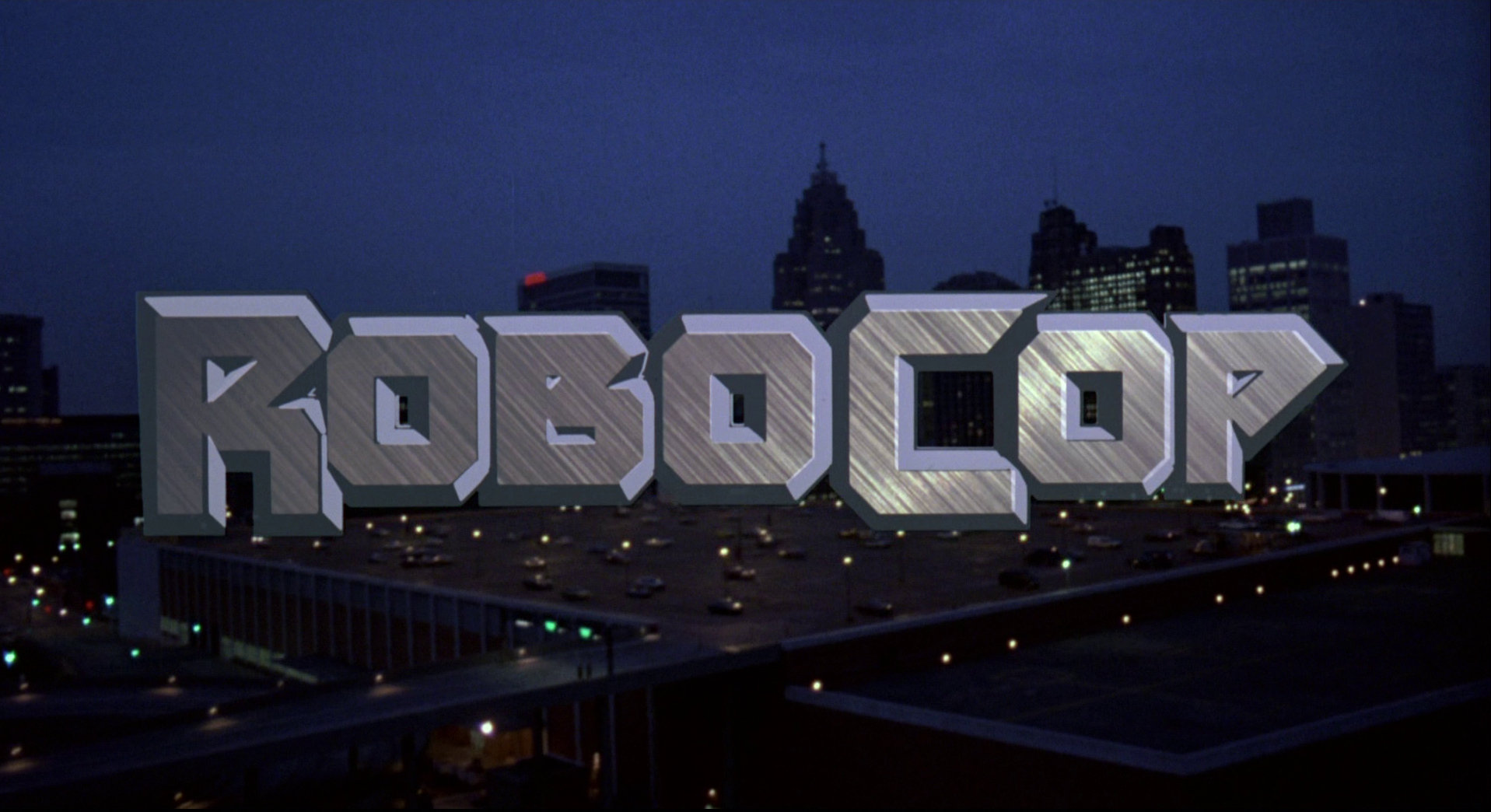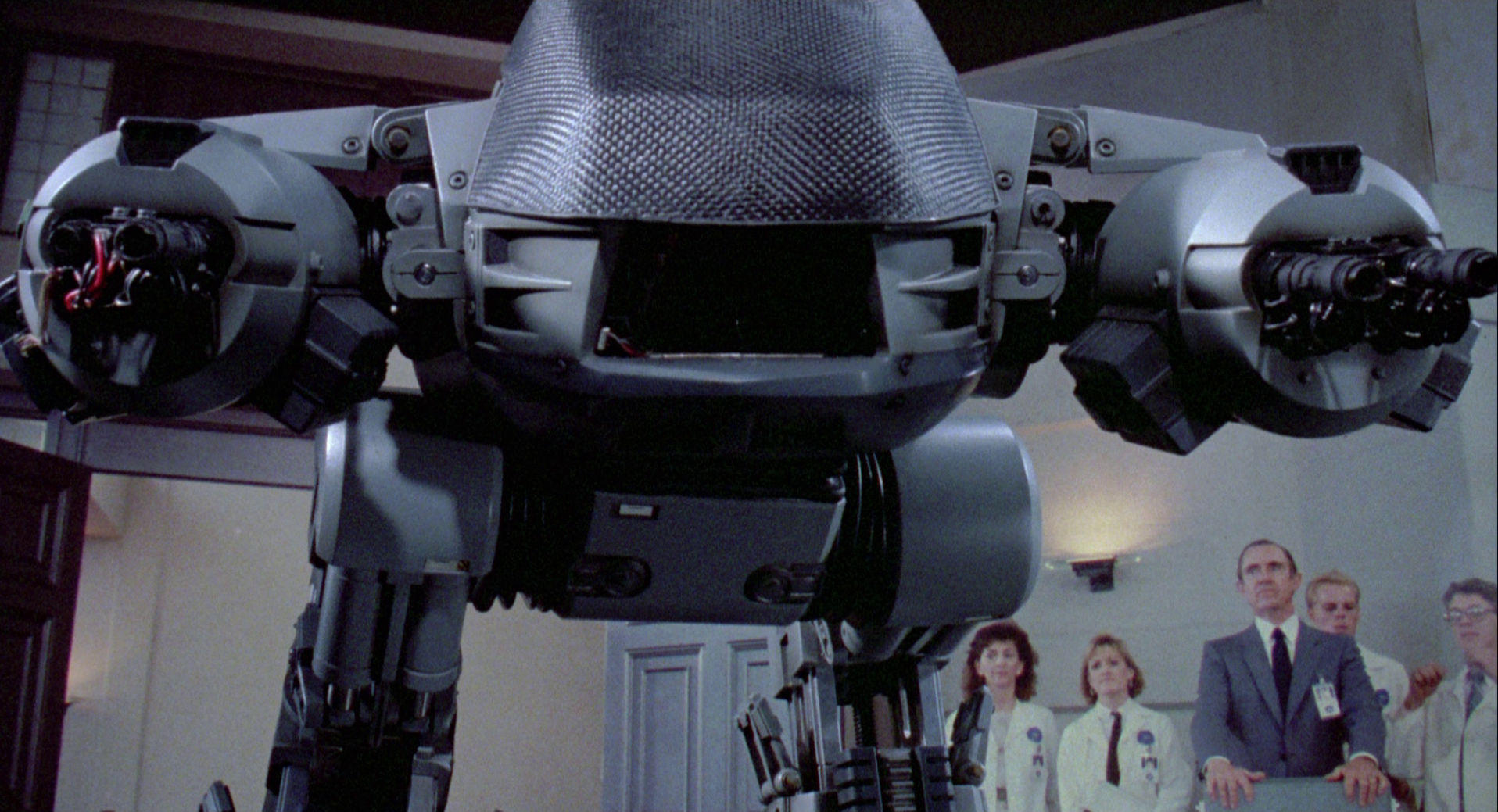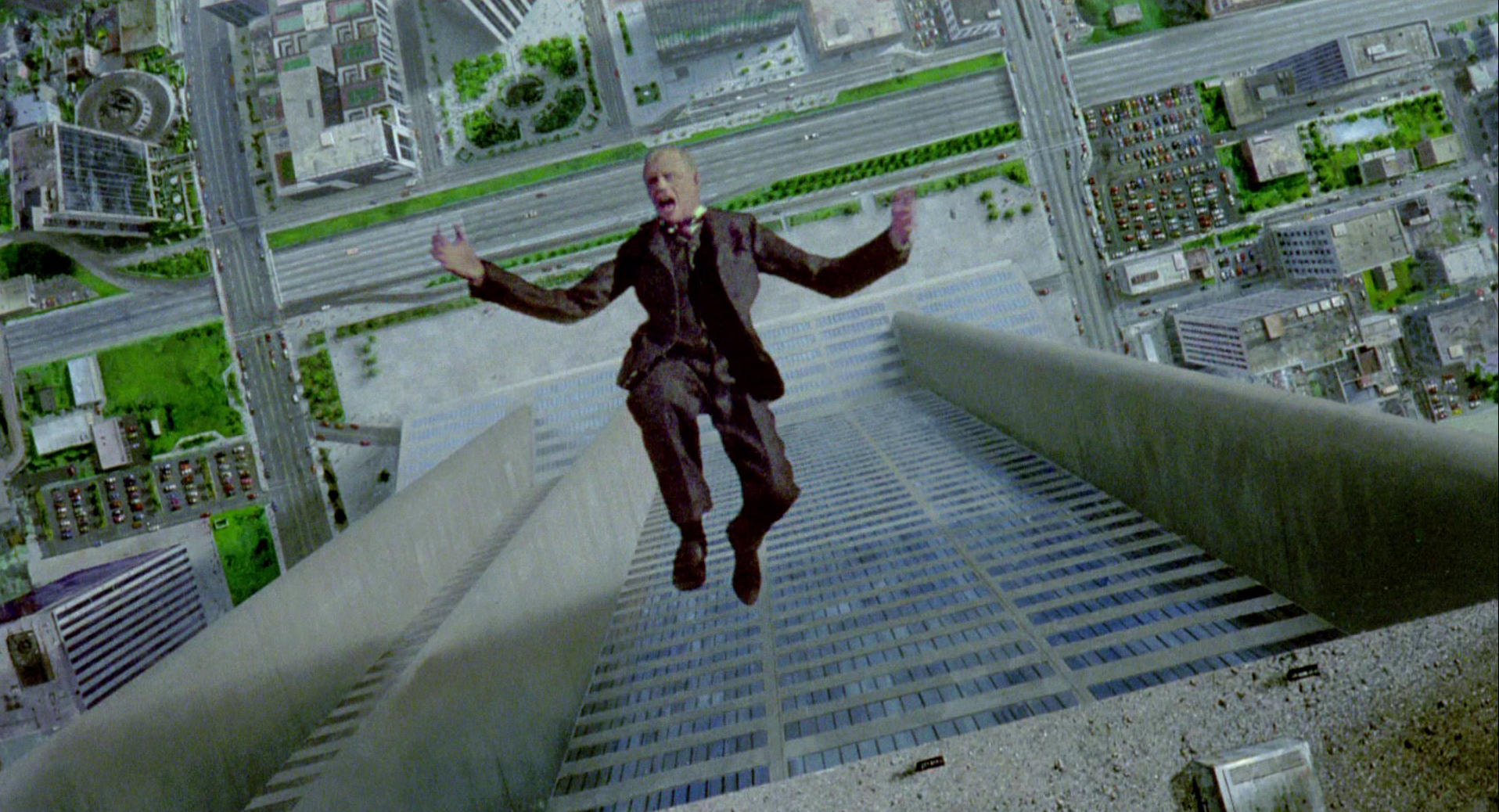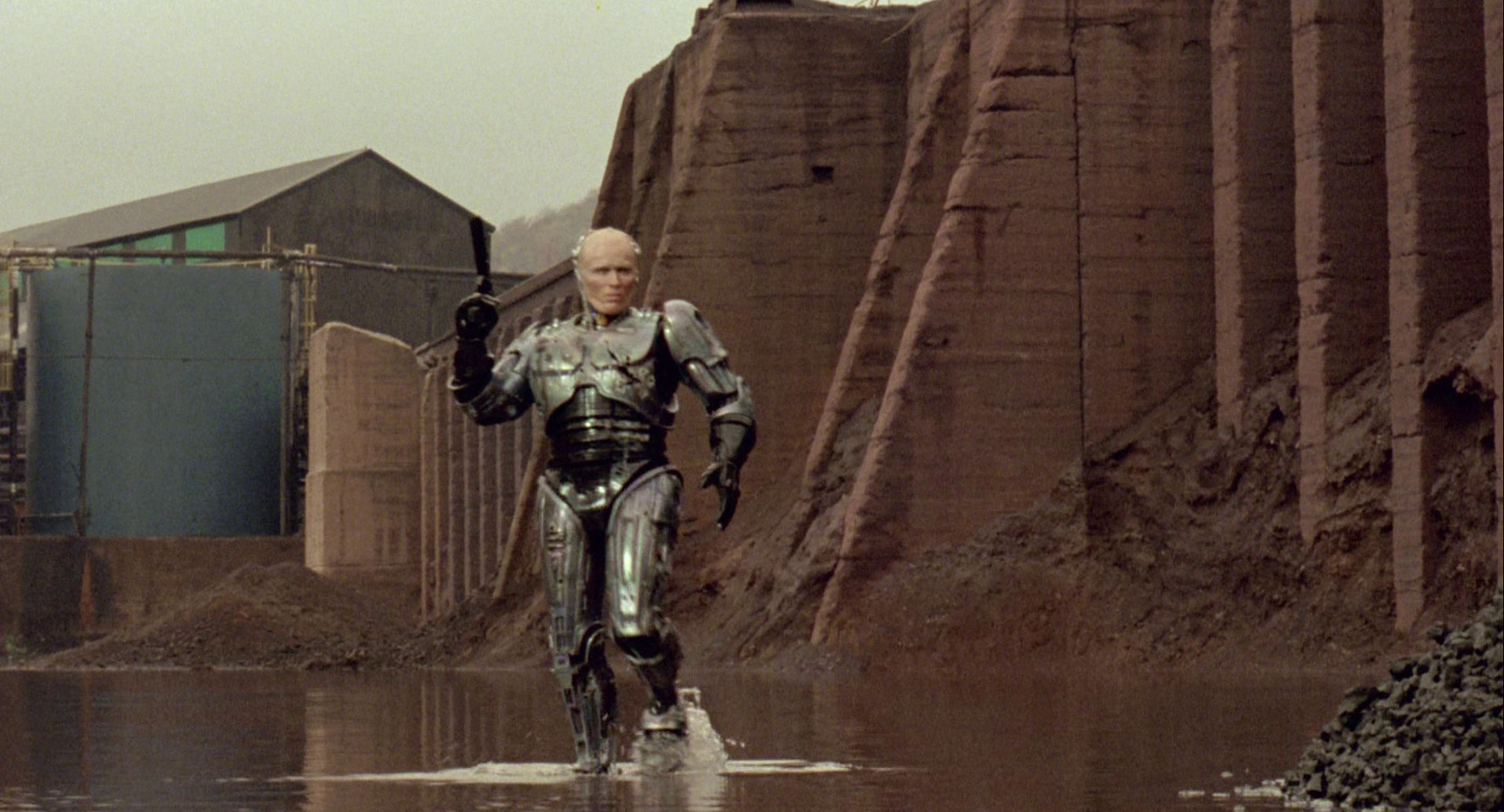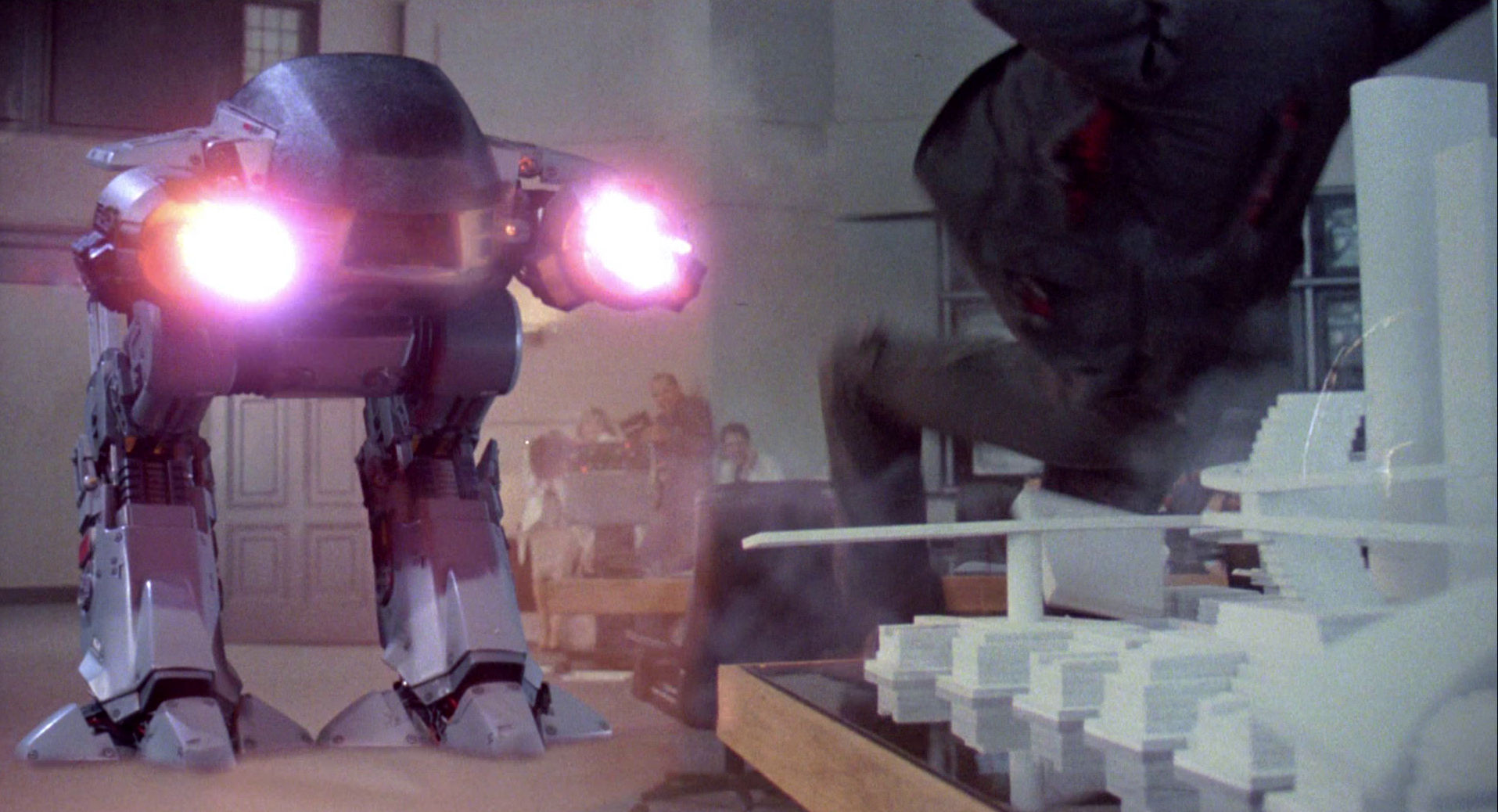Robocop
“You have 20 seconds to comply”
Such a famous line, and yet it’s not even said by the titular character, but we’ll come to that. Robocop was from an era in the 1980s when violence in films was controversial and directors like Paul Verhoeven were famous for their sheer amount of gun violence, or perhaps it was the love of squibs for entry / exit wounds?
I was in my teens when I first saw Robocop in the late 1980s, on a rental VHS tape hooked up to a small 21" 4:3 CRT, with a bunch of friends who would get together to watch horror, sci-fi and generally low quality B Movies from local rental shops. The film played beautifully into the 80s obsessions of the Cold War, drug wars and fears of a Corporate led future.
Set in that future, Detroit has declared bankruptcy and mega-corp Omni Consumer Products (OCP) has stepped in to run the city, and specifically the Police Department.
The film has the usual cold, callous corporate suits, who care about nothing more than promotion, politics and money of course - ah, the 80s, so honest. Into this, OCP wants to clean up old Detroit enough so they can build their new Delta City, and then some of these suits have done deals with criminals to run crime and prostitution in the new city. However, they also want to sell some product along the way.
To that end, enter ED-209, a monstrous robot which when demonstrated for the OCP board, guns down a young exec called Mr. Kinney with almost comedic levels of noise, smoke and blood squibs after which its sponsor (‘Dick Jones’) declares, “I’m sure it’s just a glitch.”
Step up the B-team (Robocop), who are waiting for a cop to be mortally wounded so they can experiment on them and build their super-cop based around a human rather than being wholly robotic. Enter Alex Murphy, and then enter Robocop.
The film is considered to be a part of Paul Verhoeven’s sci-fi trilogy also including Total Recall and Starship Troopers. As you watch it in 2022, the levels of violence - and all physical effects - is quite different to that of films today. There’s something somehow softer when you see superhero violence in Marvel films compared to Robocop. Watching ED-029 - a stop motion effect with a single static life size model gun down the exec in the meeting room, as scientists rip out very old fashioned looking circuit boards, it easily hits its target of dark comedy. Really that’s what Robocop is - bizarre social commentary and a very dark comedy.
It’s relatively obvious who the ‘good guys’ are - it’s Alex Murphy and his partner Lewis - but who is the antagonist, the bad guy? Is it Clarence Bodicker and his gang who laugh as they gun Murphy down, blowing his arm off with with cold laughter? Is it the B team as they decide - in front of Murphy - to ’lose the left arm’? Is it society in general?
Let’s face it, there aren’t many people to root for in Robocop, but somehow everyone kind of gets what they deserve, yet no-one really wins in the end. It is worth mentioning though that the head of OCP (’the old man’) probably does believe they’re helping the people, and compliments Robocop at the end of the film, so even OCP may not be wholly evil.
As a VFX film, it’s very impressive for its time. The Robocop suit looks excellent, really metallic, the gun still looks cool, and the way Robo’ moves still looks good. Even ED-209, though so obviously composited into shots as stop motion, is forgivable as it’s such a great character design. The only effect which has sort-of fallen apart is when Dick Jones (name very specifically chosen I suspect) falls through the window at the end, and his arms look ridiculously long. I’m not sure why that was done.
I’m something of a sound design fan too - the sound of Robocop’s gun is awesome, the soundtrack is completely memorable too, and all the sounds of Robocop moving - all layered in post-production were really well thought out. Even ED-209 with a pseudo lions roar when warning people, just works really well.
It’s fun to watch older films’ tech when they contain ‘super human AI and robotics’ in the same universe as CRT screens and mono computer displays - which always make noise when text is being displayed on them! These engineers can essentially build a cyborg, but there’s no LCD panels, and even Robocop himself has scanlines. It’s to be expected, but it is one of those things which looks odd in hindsight.
It feels like a real 80s film, even the film grain seems to fit, the blue hue to things, the corruption, the backdrop of the Cold War and potential nuclear annihilation, mixed with big-hair colour saturated news coverage, and insincere sounding adverts, my favourite being the heart centre ("…and remember, we care."). If you weren’t around in the 80s, this is one of those films about the then future which tells you as much about the era it was made in.
This TV (social) commentary as satire was then heavily ramped up for Verhoeven’s Starship Troopers after this, but even here, it paints an uncaring world, with a fake veneer, viewed through a TV - and not just the adverts and the slices of sitcoms, but in the news veers between sensationalism and fake sincerity.
In case you can’t tell then, I still have a positive opinion of Robocop, though perhaps for very different reasons than I did a few decades back. It works as a social commentary of the 80s, but also of action films of the 80s, in both a straight and sarcastic way. The film even has Robocop walking on water near the end perhaps in some weird resurrected Jesus motif. It’s odd, but it’s there. I watched it this time on a BluRay I bought cheap on Amazon. I believe there’s a newer one, but it was great to see it on a larger TV in HD and in it’s original aspect ratio, and it was even more impressive than on that CRT 30 years ago.
In summary then, it was a good film, and it’s still a good film. If you can see it on streaming, or a friend has a copy, give it a watch and see how social commentary action films used to be made. I wonder what we’ll look at as a social satire today. Probably nothing from the MCU.
